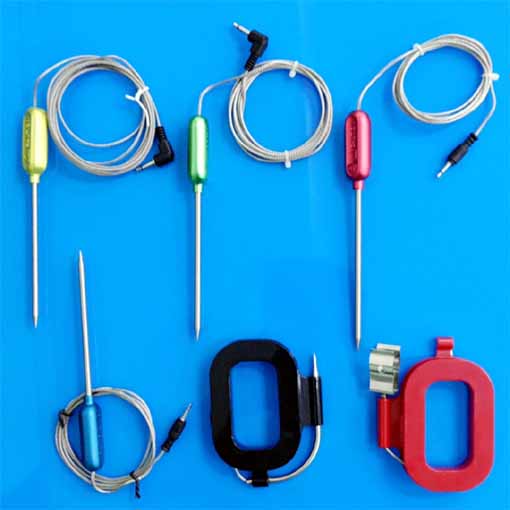Classification of thermal resistance sensors

RTD temperature sensor, NTC sensor, PTC sensor, armored RTD temperature sensor
The thermal resistance sensor is a temperature sensing device that uses the characteristics of the resistance of a conductor to change with temperature to detect parameters related to temperature and humidity.
1. NTC thermal resistance sensor:
This type of sensor is a negative temperature coefficient sensor, namely: The resistance of the sensor decreases with the increase of temperature;
2. PTC thermal resistance sensor:
This type of sensor is a positive temperature coefficient sensor, namely: The resistance of the sensor increases with increasing temperature.
The thermal resistance temperature measurement is based on the characteristic that the resistance value of the metal conductor increases with the increase in temperature for temperature measurement. The resistance value of most thermal resistors will increase by 0.4% ~ 0.6% when the temperature rises by 1℃. Thermal resistors are mostly made of pure metal materials, and platinum and copper are the most widely used. In addition, materials such as nickel, manganese, and rhodium have been used to make thermal resistors.
The thermal resistance sensor mainly uses the characteristic that the resistance value changes with temperature to measure temperature and temperature-related parameters. This kind of sensor is more suitable for occasions where the temperature detection accuracy is relatively high. The more widely used thermal resistance materials are platinum, copper, nickel and so on. They have the characteristics of large resistance temperature coefficient, good linearity, stable performance, wide operating temperature range, and easy processing. It is used to measure the temperature in the range of -200℃~+500℃. And with the development of science and technology, the temperature measurement range of the thermal resistance sensor also expands. The low temperature aspect has been successfully applied to the temperature measurement of 1 ~ 3K. In terms of high temperature, a variety of thermal resistance sensors for 1000 ~ 1300 ℃ have also appeared.
System composition of thermal resistance sensor
(1) The thermal resistance temperature measurement system is generally composed of thermal resistance, connecting wires and display instruments. The following two points must be noted:
① The graduation number of thermal resistance and display instrument must be consistent
② In order to eliminate the influence of the resistance change of the connecting wire, a 3-wire connection method must be adopted.
(2) Armored thermal resistance Armored thermal resistance is a temperature sensing body composed of temperature sensing elements (resistors), lead wires, insulating materials, and stainless steel sleeves. Its outer diameter is generally φ1~φ8mm, and the smallest can reach φmm. Compared with ordinary thermal resistance, it has the following advantages:
① Small size, no internal air gap, thermal inertia, low measurement lag;
② Good mechanical performance, vibration resistance and impact resistance;
③ Can be bent, easy to install
④ Long service life.
(3) End surface thermal resistance:
The end surface thermal resistance temperature sensing element is wound by a specially treated resistance wire, and it is closely attached to the end surface of the thermometer. Compared with general axial thermal resistance, it can reflect the actual temperature of the measured end surface more accurately and quickly, and is suitable for measuring the end surface temperature of bearing bushes and other mechanical parts.
(4) Flameproof thermal resistance:
The explosion-proof thermal resistance isolates the explosive gas mixture inside the shell through a junction box with a special structure. Due to the influence of sparks or arcs, the open circuit repair of the resistor body will inevitably change the length of the resistance wire and affect the resistance value. For this reason, it is better to replace the resistor body with a new one. If welding is used for repair, it can only be used after welding.





